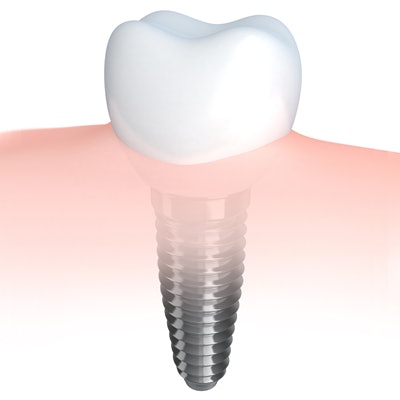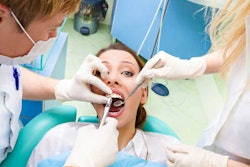
The U.S. Food and Drug Administration (FDA) released new data that include approximately 117,200 reports of serious injuries associated with dental implants. The vast majority of these injuries were due to problems with osseointegration.
Federal law requires manufacturers to file reports to the FDA when devices cause or may have caused a serious injury, defined as an injury that is life-threatening, results in irreversible impairment or damage, or necessitates medical or surgical intervention to prevent permanent impairment or damage.
The newly released reports were part of a program, known as alternative summary reporting, that allowed manufacturers of certain devices to submit quarterly summaries of serious injuries, as opposed to a report for each occurrence. Implant manufacturers who did not use this reporting method filed individual reports through a public database.
When the FDA formally ended this program on June 21, the previously undisclosed reports became public. The data show 117,202 reports of serious injuries associated with endosseous, root-form implants in 2018, although some of these reports are duplicates.
"Certainly, as an implant dentist, when I see something like such statistics, it is a concern," Natalie Y. Wong, DDS, president of the American Academy of Implant Dentistry (AAID) told DrBicuspid.com. "Even one injury related to what we do is a concern."

Of the reported injuries, 57% of implants failed to osseointegrate, and 28% lost previous osseointegration. Another 6% of injury reports were because of positioning failure, defined by the FDA as a problem associated with the inability of the device to be positioned in a specific location.
The data included implants from 10 manufacturers, including Dentsply Sirona/Astra Tech, Nobel Biocare, and Zimmer Biomet. All 10 manufacturers had instances when implants failed to osseointegrate, and most had reports of loss osseointegration.
“Even one injury related to what we do is a concern.”
Only Dentsply Sirona/AstraTech had reports of positioning failure, mostly for the OsseoSpeed TX (Astra Tech) and Ankylos C/X (Dentsply Sirona) systems. The problem code for these failures tied the positioning failure to an unspecified adverse event.
In a statement to DrBicuspid.com, Dentsply Sirona emphasized that implant-supported restorations have high success rates and that failure to osseointegrate is a well-known risk affecting all brands. In addition, the data do not include patient or clinical factors that affect the implant success rate, the company noted.
"The products in our implants portfolio are researched, developed, documented in more than 2,000 publications, and clinically proven to provide successful implant therapy," the company stated. "We have solid documentation proving the high long-term success rates of our three brands: Astra Tech Implant System, Ankylos, and Xive."
Key data limitations
The serious injury data come with a number of limitations, according to the FDA.
"While such reports are a valuable source of information, this type of reporting system has limitations, including the submission of incomplete, inaccurate, untimely, duplicative, unverified, or biased data," Michael Felberbaum, an FDA press officer, told DrBicuspid.com.
In addition, Dr. Wong stressed the importance of looking at the number of serious injuries in the context of how many implants are placed per year. Research suggests about 5% to 10% of implants ultimately fail, a percentage Dr. Wong tells her patients and one she says is conservative.
"People who have metabolic conditions, people who have diabetes, people who smoke, people who are osteoporotic, they may have a lower success rate than a younger, healthy adult," she said. "But on average, we do quote 90% to 95% success at 10 years."
Preventing implant failure
Dentists can take measures to help reduce the implant failure rate, Dr. Wong said. For instance, taking a detailed medical and dental history is crucial, as is knowing why the tooth failed in the first place. The treatment strategy will differ for someone who lost a tooth for a biological reason, such as periodontal disease, and a biomechanical reason, such as grinding.
Some types of implants are also better for osseointegration than others, she noted. Implants that are titanium and root form with roughened surfaces tend to excel at osseointegration.
Finally, proper education and patience are two keys to surgical success, according to Dr. Wong.
"We're always in such a rush, and our patients are always in such a rush," she said. "They say, 'Can't you do this in two months instead of three? Can't you put the tooth on right away?' I would advise to be conservative, let things heal, and you'll have a much better long-term outcome."



















